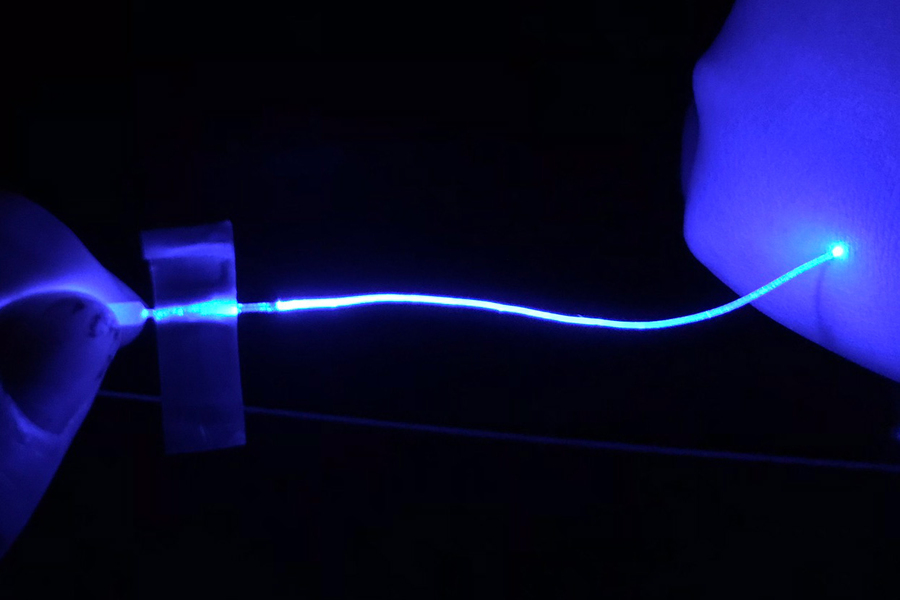Engineers at MIT have developed soft and implantable fibers that can deliver light to major nerves through the body. When these nerves are genetically manipulated to respond to light, the fibers can send pulses of light to the nerves to inhibit pain. The optical fibers are flexible and stretch with the body.
The new fibers are meant as an experimental tool that can be used by scientists to explore the causes and potential treatments for peripheral nerve disorders in animal models. Peripheral nerve pain can occur when nerves outside the brain and spinal cord are damaged, resulting in tingling, numbness, and pain in affected limbs. Peripheral neuropathy is estimated to affect more than 20 million people in the United States.
“Current devices used to study nerve disorders are made of stiff materials that constrain movement, so that we can’t really study spinal cord injury and recovery if pain is involved,” says Siyuan Rao, assistant professor of biomedical engineering at the University of Massachusetts at Amherst, who carried out part of the work as a postdoc at MIT. “Our fibers can adapt to natural motion and do their work while not limiting the motion of the subject. That can give us more precise information.”
“Now, people have a tool to study the diseases related to the peripheral nervous system, in very dynamic, natural, and unconstrained conditions,” adds Xinyue Liu PhD ’22, who is now an assistant professor at Michigan State University (MSU).
Details of their team’s new fibers are reported today in a study appearing in Nature Methods. Rao’s and Liu’s MIT co-authors include Atharva Sahasrabudhe, a graduate student in chemistry; Xuanhe Zhao, professor of mechanical engineering and civil and environmental engineering; and Polina Anikeeva, professor of materials science and engineering, along with others at MSU, UMass-Amherst, Harvard Medical School, and the National Institutes of Health.

